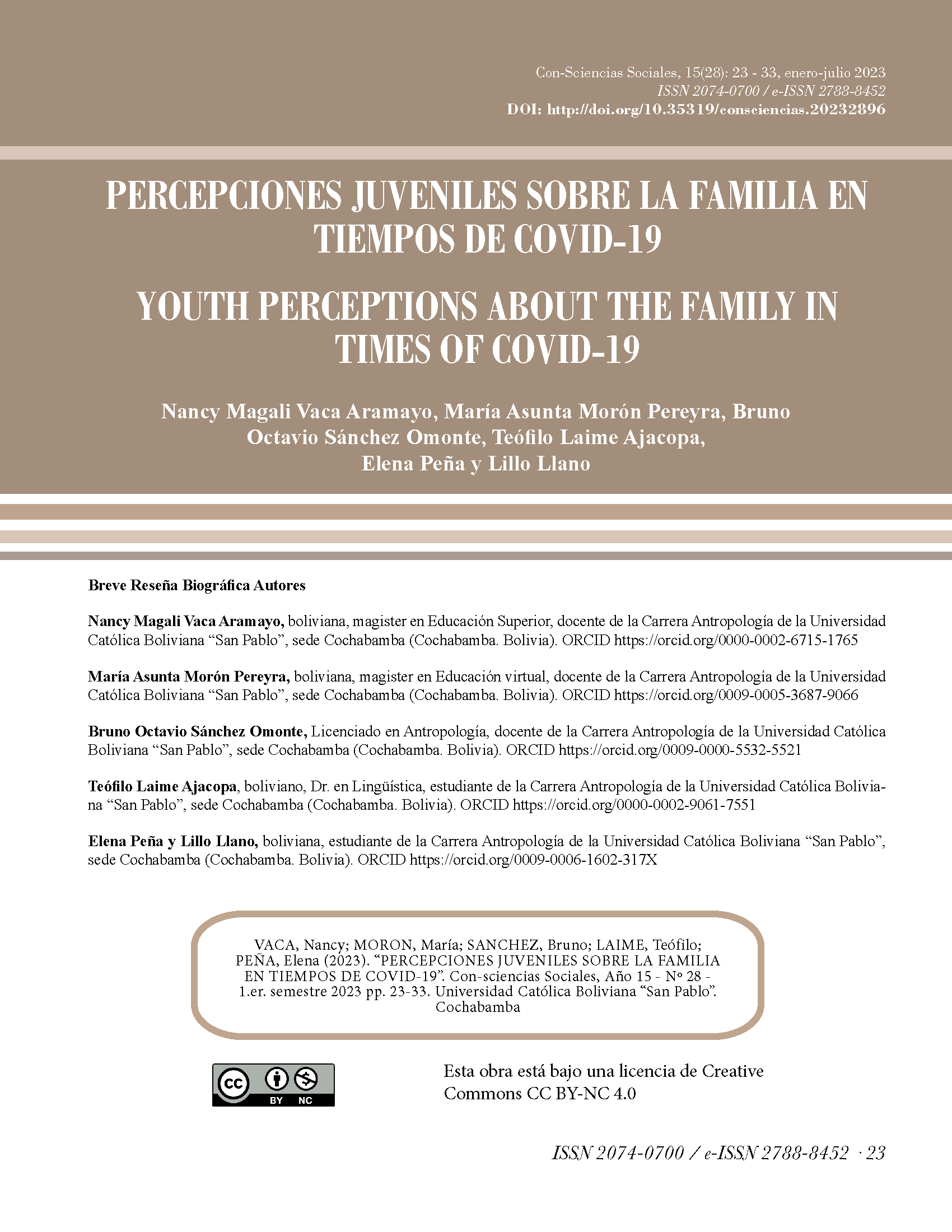Youth perceptions about the family in times of COVID-19
DOI:
https://doi.org/10.35319/consciencias.20232896Keywords:
Family, young people, Christian values, family relationships, Covid-19Abstract
The central theme of this work is the youth perception of the family during Covid-19, aiming to reflect what young people think about family in terms of its composition, relationships, and promotion of values. It also seeks to identify the relationship between family religion and the values and preparation of its youth. Furthermore, the imaginary of the Christian family was identified based on the influences of micro-macro contexts.
To carry out this study, a qualitative scientific method was employed, which allowed for the identification of three levels of analysis: the definition of family according to young people, the reasons behind family characteristics, and the perception that young people have of their family environment. A series of interviews were conducted using a guide with 33 students from different educational institutions in the administrative area of Cercado 1 in the city of Cochabamba, during the months of October and November 2020, in a virtual format.
The results show that young people have a perception of family centered around values. They recognize relationships of consanguinity and affinity based on family closeness and distance, and they identify the characteristics of a Christian family. They also acknowledge that the family is the place where they learn to internalize values that serve as the foundation for future family roles.
This document is considered pioneering in the research field of society and family from a youth perspective, and it is expected to contribute to future investigations on this topic.
Downloads
References
Bronfenbrenner, U. (1987). La ecología del desarrollo humano. Barcelona: Paidos.
Guerrero, P. (1996). Notas para una aproximacion al concepto de cultura. Aportes. Quito, Ecuador: Asociacion Escuela de Antropología Aplicada-UPS. Universidad Politécnica Salesciana.
Levi Strauss, C. (1987). Antropología Estructural.Mito, Sociedad, Humanidades. Barcelona: Paidos.
Opinión. (5 de febrero de 2017). En todo el departamento hay 2386 Unidades Educativas. En todo el departamento hay 2386 Unidades Educativas, pág. 1.
Platt, T. (1980). Espejos y maiz: el concepto de yanantin entre los Macha de Bolivia. En E. Mayer, & R. Bolton, Parentesco y matrimonio en Los Andes. Lima: Pontificia Universidad Católica. DOI: https://doi.org/10.18800/9788489292451.004

Published
How to Cite
Issue
Section
License
Copyright (c) 2023 Revista Con-Sciencias Sociales

This work is licensed under a Creative Commons Attribution-NonCommercial 4.0 International License.









